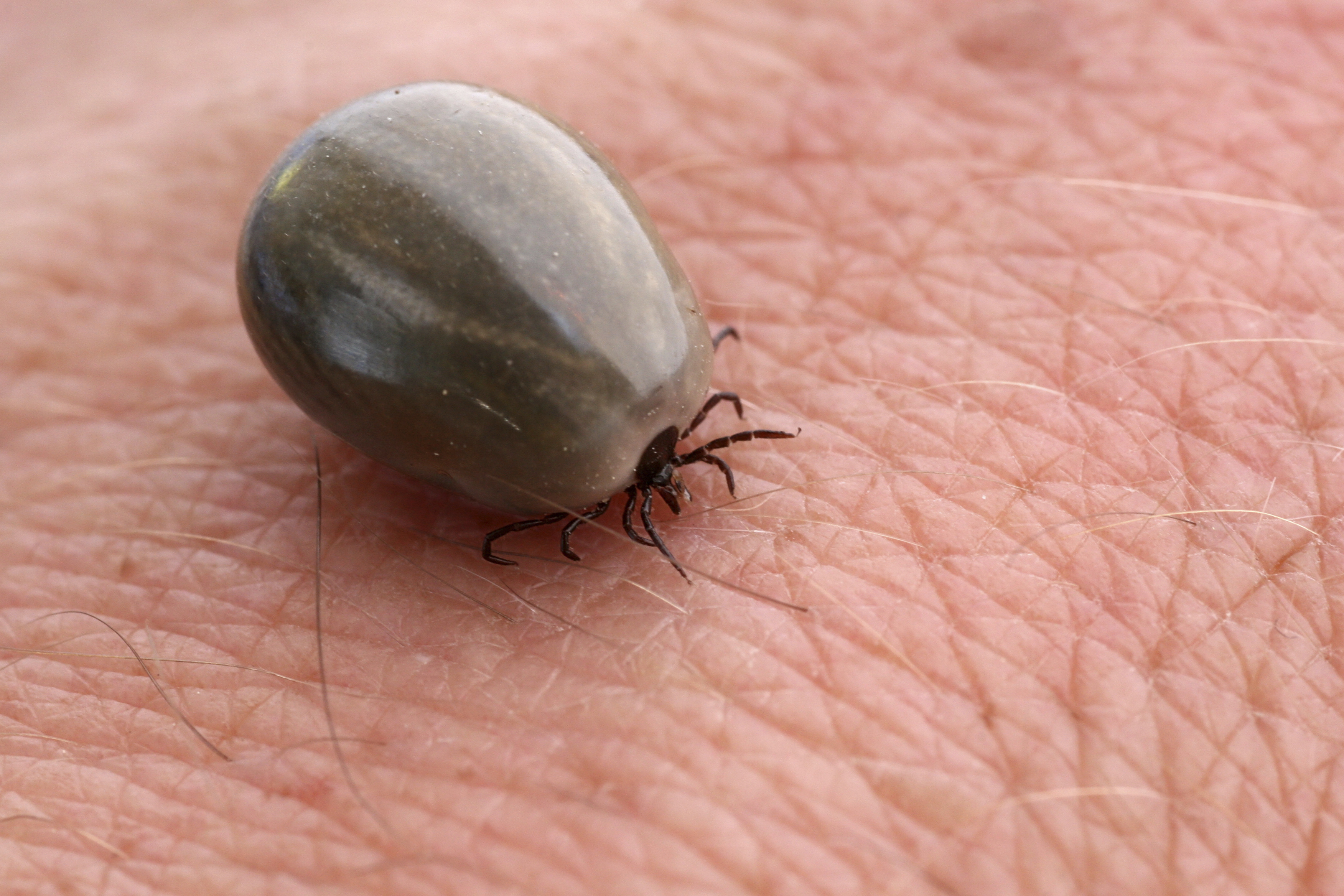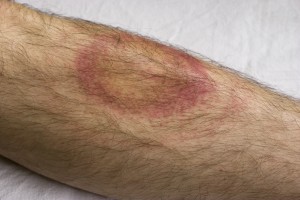
May 5, 2016, by Liz Cass
Lyme Disease: A ticking time bomb
Lyme disease is one of the fastest growing vector-borne diseases in the Western world – the threat it poses has become increasingly apparent in recent years. Estimates suggest that more than 300,000 people are diagnosed with the disease each year in the US and more than 65,000 cases a year are diagnosed in Europe. However, the true number of people affected is probably underestimated due to under-reporting and the limitations of current diagnostic tests.
Borrelia burgdorferi is a spirochete (corkscrew-shaped bacterium) that consists of more than 20 sub-species, five of which can cause disease in humans. Borrelia can flourish inside the tick, where they migrate from the gut to the saliva glands. In this way, they can penetrate human skin when a tick takes a blood meal and disseminate via the blood to multiple tissues. To survive and establish infection, Borrelia mutates in a number of ways to become invisible to the host’s immune system.
The main vector for transmitting the bacteria in Europe is the deer tick, Ixodes ricinus, but other Ixodes species act as vectors in the US and in Asia. Humans can become infected after being bitten by an infected tick. However, as Ixodes ticks can also transmit other pathogenic bacteria and viruses, it can be hard to diagnose Lyme disease among the potentially large number of infections that may have been contracted as a result of the tick bite, meaning it often goes untreated.
But it’s not just ticks we have to worry about. Lice, fleas, and mosquitoes have also been found to contain Borrelia. Worrying, Borrelia bacteria may also be transmitted from person to person through saliva, organ transplants, blood transfusions, sexual contact or breast milk. It has also been suggested that Lyme disease could be transferred to a foetus via the placenta, however this has yet to be proven.
What Borrelia can do to people
Some individuals develop a bull’s eye-like rash, called Erythma migrans at the site of the tick bite, three to 30 days after infection. As infection spreads, Borrelia can also affect other skin sites, the nervous system, the joints or the heart. Brain infection is a rare but potentially serious complication, arising in 15% of untreated Lyme patients who go on to be very ill. This can also cause permanent neurological injury.
Because of this wide range of non-specific symptoms, patients often don’t get a clear diagnosis or treatment options. When Lyme disease is suspected, laboratory tests to detect specific antibodies against Borrelia burgdorferi can help confirm the diagnosis – although these are far from perfect. Some patients, about 10-20%, can develop a debilitating chronic condition called post-treatment lyme disease syndrome, with symptoms that include arthritis, fatigue, muscle pain and minor cognitive impairments such as headaches and sleep disturbances.
Unfortunately, there is currently no vaccine available against Lyme disease. However, there are measures that can mitigate the risk of infection, including avoiding tick-infested areas, wearing personal protective measures to reduce the risk of tick bites and the use of antimicrobial treatments following a tick bite.
Timely treatment for Lyme disease is crucial to prevent illness and avoid long-lasting symptoms. Early stages of Lyme disease can be effectively treated with antibiotics, but patients with the chronic variant may require months or even years of treatment before it resolves. Unfortunately, some physicians still view antibiotics as the only solution to this disease but chronically infected patients require multidisciplinary care – addressing all simultaneous infections, providing immune support and management of any other health complications.
Tackling the threat
The effects of the disease on so many body systems, and the debilitating impact on the life of the affected patient, have triggered a crisis that has far-reaching implications for public health and policy. When people get diagnosed with Lyme, they make a shift to a life of increasing uncertainty, particularly from a lack of adequate and credible information.
It’s clear, given the rise in clinical cases across the world and the number of people who continue to suffer even after antimicrobial treatment, that Lyme disease is spreading rapidly. For example, in the US the number of annual reported Lyme cases has increased about 25-fold since the national surveillance began in 1982.
Many aspects of the disease mechanisms, such as the chronic condition, remain controversial or evolving, due to the scarcity of robust evidence-based data. There is not even one consistent terminology that defines “chronic Lyme disease”. More measures are also needed to resolve the crippling uncertainty surrounding the infection. We need more research to help develop reliable diagnostic tests, identify sub-populations of patients who are most likely to benefit from antibiotic treatment, and ultimately to ensure that Lyme disease does not become a pandemic reality.
Hany Elsheikha, Associate Professor of Parasitology, University of Nottingham
This article was originally published on The Conversation.
No comments yet, fill out a comment to be the first


Leave a Reply